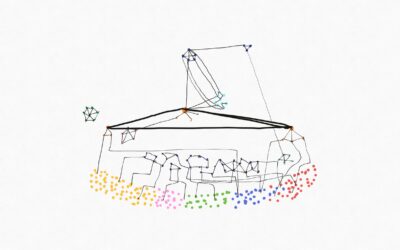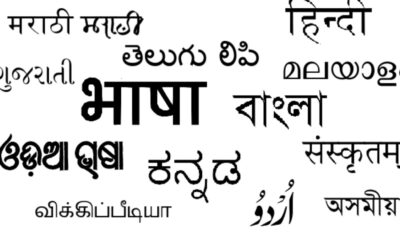The e-Shram card was brought in by the central government in August 2021 posing as an answer to the enumeration of migrant workers and consolidated social security benefits for all unorganized workers in our country. A long overdue inclusion of the workers and their social welfare is one of the biggest challenges for our 400 million informal labor force. As of June 6, 2022, India saw more than 27 crore registrations with 52% being women. Almost half of the registrations are by Agricultural and allied workers followed by Domestic/Household workers and then from Construction.
The state of Kerala, standing 15th in the country has about 58 lakh registrations till date (the highest being Uttar Pradesh with 8 crores) with Malappuram and Kozhikode having the maximum number of registrations. The state is also home to about 31 lakh inter-state migrants.
Women form the majority of all registrations not only in Kerala but overall in the country too. The two highest occupations – agriculture having a huge invisible women workforce and domestic/household workers with a substantial majority consisting of women are a reason for this predictably surprising number. Colloquially known as the ‘Modi Card’ the e-Shram as compared to hundreds of other schemes is vaguely known to the migrants. Launched with a lot of promises currently, registration provides for INR 2 lakh accidental death insurance (or INR 1 lakh for complete physical disability) as per PM Suraksha Bina Yojana.
As a lesson from the crisis during the pandemic – this database is touted to be used during similar emergency situations for providing aid. While it has been promised that all social security benefits shall be delivered through this card, including a recent statement by the current Labour & Employment Minister on integrating One Nation One ration with e-Shram it is yet to be seen how the same shall be implemented.
Basic Eligibility And Procedure
- Unorganized workers in the age-group 18-59 years
Only workers between 18 to 59 years can register for e-Shram. The challenges start at the very beginning of the registration process. Informal sector workers do not have the luxury of early retirement. In Vathuruthy in Cochin, we saw many older Tamil migrants, particularly women. The scheme completely excludes them. The date of birth in Aadhaar is also often incorrect (even for young workers, we see people born on 01/01 almost every day). The classification of organized employees cannot be imitated for the informal workforce.
- An Aadhaar card and mobile number linked to it
We have lost count of how many times and occasions it has been established that Aadhaar cannot be a sole criteria for enrolment to necessary welfare schemes by the courts. The governments though evidently and strongly disregard the same. From school enrolment to registration for welfare schemes- mandatory Aadhaar continues to be unconstitutionally followed. For migrant workers, phone numbers are not permanent. They frequently live/work in different areas and have different numbers every other month. This difficulty was also observed during vaccination where there is no alternative or option to change the number that was registered first. To keep re-linking their new numbers to their Aadhaar requires taking leave for a day or two to go to their nearest Akshaya center wait in the queue and provide their biometrics.
In Perumbavoor (Ernakulam), the Akshaya center opens at 9 AM with workers awaiting their turn way earlier because the center does enrollment only for the first 50 people. The long wait similarly for updation dissuades working migrants to do this every time they change numbers.
- Bank account in your name
Due to increasing financial awareness during PM Jan Dhan Yojana many people opened bank accounts, albeit that are mostly dormant. Most also have joint accounts usually with their spouse. Though an independent bank account for women migrants was still not a norm observed in the field.
Registration Form

The e-Shram website will take you to a new tab of self-registration where you are asked to type your mobile number and an alphanumeric captcha. You will receive an OTP after stating that you are not part of EPF or ESIC. Thereafter, if you type your Aadhaar number, another OTP is directly generated to your Aadhaar linked mobile number. Hence some basic details are automatically taken from your Aadhaar for e-Shram such as photographs, name and age.
The first form, like most other documents, only asks for the father’s name. The other questions of caste, blood group, etc are not mandatory. The only other thing to be filled is a nominee-with only close family relations as options available who should have a mobile number. Even for siblings, only dependent siblings can be filled as a nominee. Most unmarried migrants who keep one of their parents as nominees have often said that they do not have a mobile so we fill in the details of any ‘home’ number used by other members.
Next are the residential details of both the native district and current location and one question of how many years in the current location.

The Educational Qualification from illiterate, primary, secondary, graduate, post graduate, and allied to technical education received are to be chosen next. Monthly income slabs are provided further starting at less than 10,000 to the maximum of 20,000. While both these questions also require documentation/certificate to be attached it is not a mandatory question. The occupation related questions are followed next. One has to choose the primary and secondary occupation using the options in the National Occupational Classification (NCO) codes.


This page further also notes how skills were obtained for the occupation and if they need to be upgraded. Only the primary occupation is a mandatory question in this section. The last section has bank details – account number, holder’s name, and IFSC code

A preview form is generated next that comes all details entered and a self-declaration ensuring that it is correct. Post confirmation, the card is generated and one can download its PDF. Immediately a message is also sent to the registered phone number about the same.

For the digitally literate this may look simple. The registration requires no documentation, proof of income/residence, etc. but there will barely be a worker who can fill this independently. Without facilitators like Akshaya Centers or civil society organizations, the registration process is a huge challenge.
Not to forget internet and printing charges for migrants/poor are unfairly exorbitant. Choosing from the codes for an occupation to knowing your IFSC code are not information known to migrants. Further, the gender gaps in our society ensure that women do not always have an independent bank account number or even mobile phone.
The rights touted to be given through this scheme are accrued and made for beneficiaries, the charity approach to basic labour rights may continue to prove to be detrimental. Not long ago the same central government came up with Shramev Jayate Karyakram with a ‘revamped’ Rashtriya Swasthya Bima Yojana again for the same pool of workers from the unorganized sector linking them to social security schemes. The former Inter-State Migrant Workmen Act too provided for registration for inter-state migrants like most labor legislations and a multiplicity of schemes. So, how will this scheme be any different? We can only wait. There are larger concerns too on data security in a country lacking stringent protection measures and multiple instances of data abuse by the state.
What Do The Workers Think?
If nothing the e-Shram has great awareness across various states. Most claim to know someone or heard of someone who received the money in their accounts in lieu of their e-Shram registration. Even with the challenges, the ease of getting e-Shram and the hope of getting whatever money makes them eager to register. Maniq* has been a plywood worker for the past seven years – with no provident fund, pension, savings, or insurance signs up for any card/scheme that we facilitate “Kya pata kisse fayda ho jaye. Har baar kuch naya aaya toh sab wahi bolte hai ke isse fayda milega. Ab aap e-Shram me bol rahe ho toh wo bhi kar lete hai.” (You never know what will be useful. Every time something new comes up everyone claims it is most beneficial, now you are saying that’s e-Shram so let’s register for that too).




0 Comments